He is mostly known for his Bionic Chair, an exoskeleton chair in where the user can control a computer through body movements, but beside product design Govert Flint has worked as an architect in Shanghai, he is a self-taught artist and he’s got the moves, as you can see in this video clip of Run Boy by Keymono.
In dancing he found the rationale of his work, exploring how movement can be implemented in everyday life.
According to Govert “the body complements the brain” and our environment needs to be designed to that end. To emotionally release ourselves we need to stand-up – away from the computer – and move freely. However, as his Bionic Chair shows, the solution lies not in abandoning the computer but by offering alternative ways of interacting with it.
In 2014 he joined the Eindhoven-based design collective Collaboration-O and started his own studio: The Institute for Applied Motions. Today he is working with Enrichers, a company merging design with neuropsychological principles. We talked to him about the relationship between body movement and emotional expression, mind-controlled computers and more.
A common thread in your work is that you don’t limit yourself to a one discipline. Your work covers architecture, painting, performance art and product design. What do you like about working in a variety of disciplines?
I focus myself on body-movement and I like to explore that in any medium that interests me. At Architecture I researched the continuity of lines and spaces and how a person moves through them. With painting I worked on movement as well, but from the perspective of the spectator and how he or she relates to the paintings. This is called “Interactionism”, which means that you configure the paintings in a space in a particular way so the piece of art is represented by multiple paintings. Depending on your position in the space the paintings link differently to each other.
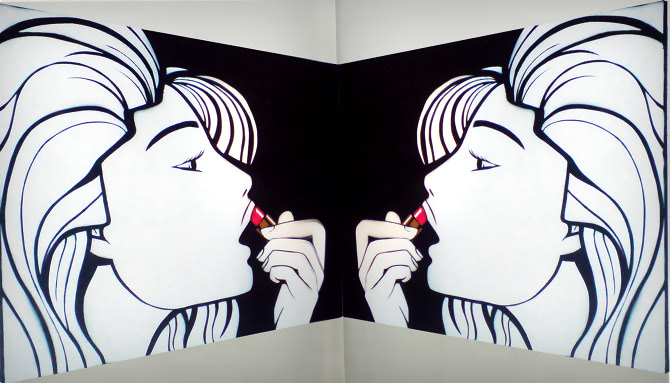
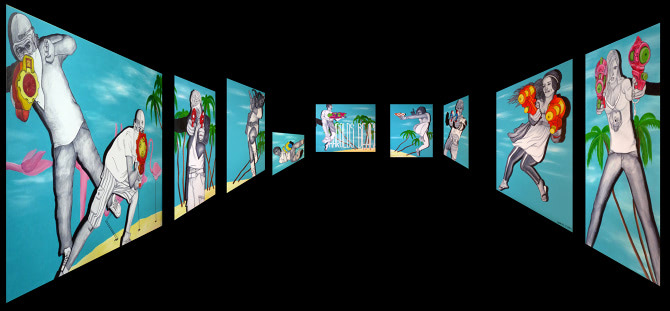 Two Interactionism paintings by Govert Flint
Two Interactionism paintings by Govert Flint
Do you think that buildings need to be designed to stimulate body-movement more?
What I find interesting is that many modernists thought that a big empty room provides a functionally very flexible space. Consequently that’s being solved with interior, which seems like a good solution, but it costs a lot of money to renew the interior every time. I think it gets truly fascinating when interior is integrated in architecture.
Like the Rietveld Schröder House in Utrecht?
Yes, I think that’s a nice example. But what if you could also move external walls, and vary with solid and transparent, outdoor space and indoor space and perhaps even change according to seasons? In that way a building becomes more dynamic and allows people to interact with it, thus stimulating movement.
We have beaten ourselves in our technological striving to make our lives easier
Why do you think movement is important?
I don’t think it is important by itself, but I think it’s important that people can express themselves. I like to evoke this with movement, so people can emotionally release themselves, no matter if it’s in an aggressive of joyful way. In the Netherlands we are so used to structure ourselves in public spaces, in our work and in private, even during festivals where we let go of control almost in a forced manner. By means of movement products, interaction gives people an excuse, so to say, to express themselves emotionally.
What is the relation between movement and emotion?
At the Aalto University they have found that when you feel certain emotions, specific parts of the body get activated and I hypothesize that it also works the other way around. That’s why I think we need movement to experience certain emotions.
Is it more difficult nowadays to fulfill that need?
I don’t think it’s more difficult, we have, after all, invented many sports and other activities that fulfill that need. But computers have taken over so much of our work and activities, eliminating movement as a functional necessity. It’s strange that we’ve made ourselves so efficient that we now have to spend extra money to make our bodies function normally. In that sense we have beaten ourselves in our technological strive to make our lives easier, as we now have to reconsider what our bodies actually need.
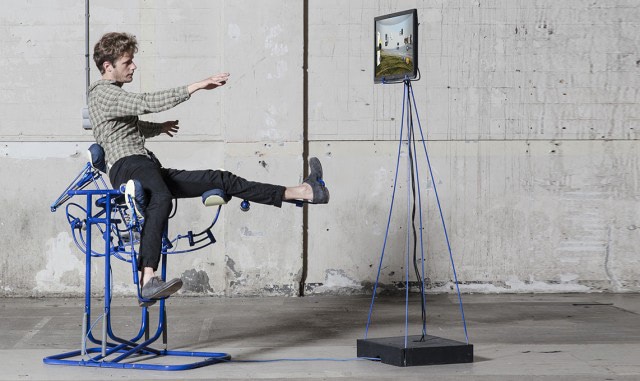 The Bionic Chair
The Bionic Chair
What if it is unavoidable that mind-control is the future, which means we will neglect our bodies completely. What is then the goal of the Bionic Chair, an exoskeleton chair that a person can use to control the computer through body movements?
I believe in my hypothesis that the body complements the brain. If that’s true people will intuitively tend to act to that notion. But I do realize that people are lazy. If our society functions well with physically fatigued people then maybe it’s not so bad after all. However, I have more than enough reasons now to push the boundaries and serve as a counter movement.
Can people use more technology than it is good for them?
I think that we are heading towards direct brain manipulation, which would make our bodies entirely obsolete. This is problematic, as you probably still need to maintain your body, thus creating a conflict.
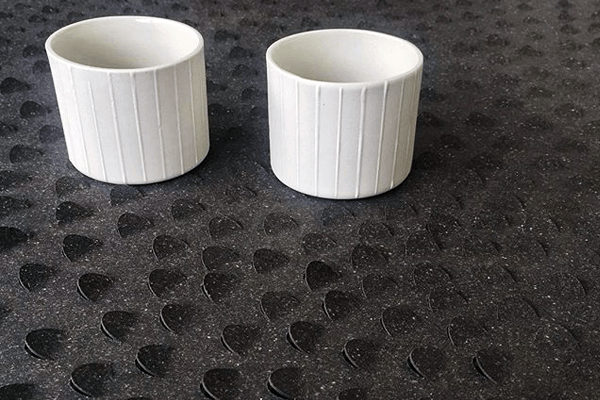 Tactile Table by Enrichers
Tactile Table by Enrichers
What if, in 20 years or so, when direct brain control might be a fact, we invent a pill that would supply us with all the physical benefits that physical exercise would otherwise give us, so we can stay healthy without actually using our muscles. Would that be a future where you want to live, or do you think a pill is not the solution?
I think that’s a very scary scenario. However, on the other hand, we already have many replacements for certain needs. If you call or Skype someone, that person is being replaced quite convincingly by a sound wave or a pixel. Maybe by the time that pill replaces the need for physical exercise it will feel very natural to us. Yet, I do wonder if that pill solves everything. Your brain, for example, releases endorphins when your muscles make new cells after excessively using them. We will have to find out what the consequences are of such a pill. At this point, with my current knowledge, I don’t think a pill can solve everything. In my opinion the body has a lot to offer and its potential is not fully utilized now.
What do you think about the potential futuristic scenario where we upload ourselves to the virtual world and leave our bodies behind?
I think that comes down to a Matrix scenario. On one hand it can be liberating for many people who are not satisfied with their bodies, as they can create their virtual bodies however they like them to be. It’s also possible to develop a skill way faster. Let’s say somebody wants to learn how to sing, digitally that’s much easier than physically. So, this scenario could offer many new possibilities, but on the other hand what will the value be if everything becomes so easy? New ideas arise in the process of developing something, these might disappear as well.
Creativity is being reinvented over and over again
In that scenario people are able to avoid many anxieties and common fears in daily life. This is already happening on Facebook for example, where you are in control of how you present yourself, who your friends are, which messages you receive, which news you’re being fed; in a way you are your own curator. This is worrisome as I think personal development thrives on confrontations. The difficulties and troubles you encounter and overcome in your life make sure you improve yourself and make you a unique individual.
Do you think there is less creativity or more now compared to 50 years ago?
That’s difficult to say. I think that there is more creativity, because many processes have been accelerated and a lot more interdisciplinary connections are being made. On the other hand, I learned that when you have restricted means you are urged to be more creative and this sometimes lifts a project to a higher level. I consider this inherent to a creative process. Restrictions and limited means are necessary to come to the essence of your creation.
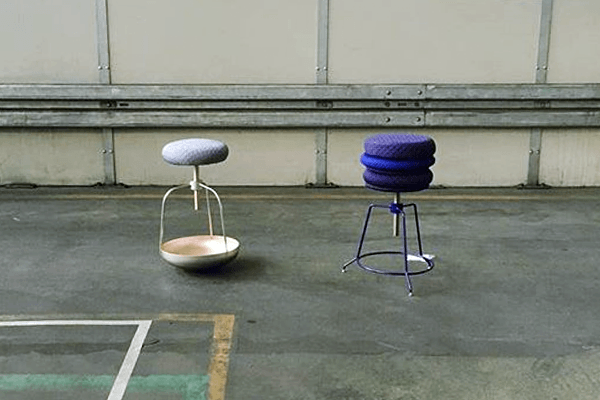 Stools by Enrichers
Stools by Enrichers
So, do you think that every age has its own balance of advantages and disadvantages and they all pose their own challenges?
Yes, I think a new age enables more creativity, while also depriving creativity. Nowadays, for example, we need and use less crafts. To make poster in former times you would have spent an entire week mixing pigments, while today you can have a good looking Photoshop render in an hour, which has effects and qualities unequaled by the old school way of doing. Creativity is being reinvented over and over again. The goal of creativity changes over time as well.
Do you think it’s more difficult nowadays to come up with something new?
When I worked architect in Shanghai I used to deal a lot with references. Sometimes I was only busy with browsing what others had made. But I think that’s something you just shouldn’t be doing. That is not the right method to generate creativity and start a creative process. The basis of any creative process needs to be your own curiosity and your own experiments. References are a tool to communicate your ideas to others.
The body complements the brain
Dadabase is a recent project, part of the Dutch Design Week in 2015, in which you explore a new revenue model for designers. During exhibitions the project gathers data from how people respond to artworks. It’s different from your other works as it is more focused on emotions and gathering data, than on the exploration of body movements. Why this project?
Dadabase was actually a protest out of my own experience. I noticed that in the creative industry all the money goes to the facilitation of services such as the organization of an event or to fund a museum. In the end there is almost nothing left for the designers and artists who actually give content to the creative industry. So we thought: if our society wants to make everything measurable anyway and the arts defend themselves as having an added value on the emotional level, then we should prove our relevance by measuring emotional responses with specific software.
Artistry needs to be valued, also economically
With Dadabase we acknowledge that there is a trend of free content, which is very strong online, but also seeps through into the creative industry. We want to turn that problem into an opportunity and make it work in our own benefit. In this way people can cheaply participate in an exposition in exchange for their data. It’s also a statement that says: we don’t accept this situation. Artistry needs to be valued, also economically.
What I find fascinating is our current collaboration with Schiphol Real Estate. There seems to be a high demand nowadays for ‘out of the box’ ideas, creative thinking, but also a connection with science. I think artists are better off now when they expand their horizon beyond the creative industry, as it then becomes possible to have an impact on people's everyday life.
What project are you most proud of?
I find that hard to say. I started with architecture and design, and not with the art academy, because I want to have an impact on daily life. None of my projects have achieved that yet. My projects were usually functioning as a source of inspiration for others or making statements. I think this project for Schiphol is the first one that has the potential to infiltrate daily life. I don’t feel like I have achieved yet what I hoped to achieve when I started designing.
What if I would be a time traveler and I would tell you that in 50 years from now everything is mind-controlled and people have become fully sedentary beings. However, your Bionic Chair has become a famous museum piece and gets worldwide attention. Mission accomplished?
No, in that case I don’t think the Bionic Chair has created the societal value it has been designed for.
What if it is unavoidable that mind-control is the future, which in turn means we will neglect our bodies completely, what, then, is the goal of the Bionic Chair?
Perhaps it is simply not possible to have an impact that exceeds public awareness and make a change. But at this point I’m not worried about that. I still believe in my hypothesis that the body complements the brain. If that’s true people will intuitively tend to act to that notion. But I do realize that people are lazy. If our society functions well with physically fatigued people then maybe it’s not so bad after all. However, I have more than enough reason now to push the boundaries and serve as a counter movement.
Featured image: Ronald Smits
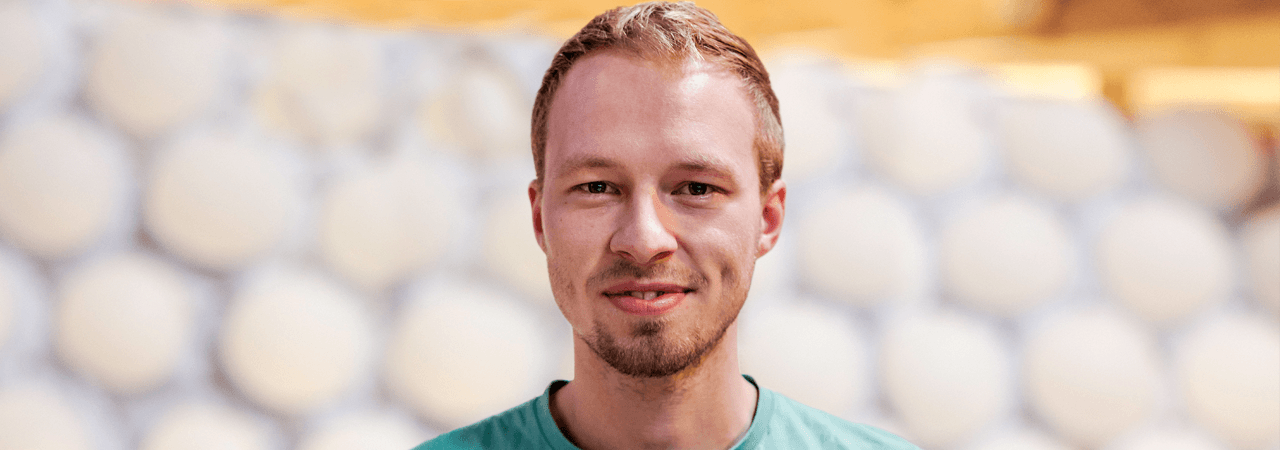
Share your thoughts and join the technology debate!
Be the first to comment